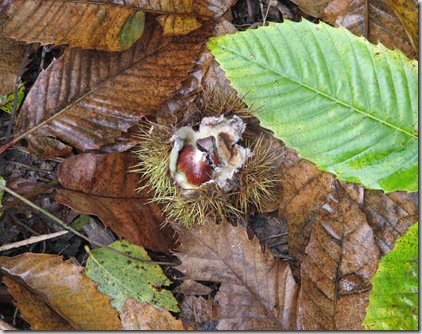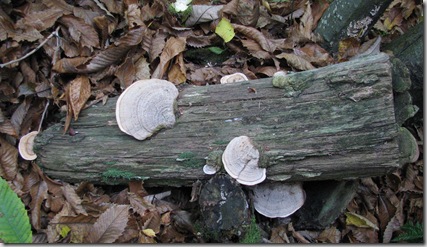Chestnut coppice is often rather poor in terms of wildlife. After all, the tree is not a native and has rather few creatures that feed on it and the regimented alternation between open ground and densely shaded cover in the coppiced areas may give a periodic boost to spring flowers on the ground, but is not necessarily of as much value to wildlife as other kinds of woodland management.
In Brede High Woods there is a suite of fungi that occurs sparingly in the sweet chestnut areas. The oak mazegill bracket fungus (Daedalea quercina) below is growing on chestnut, but prefers oak.
The fungus causes heart rot in timber, is very tough and totally inedible. Among its few redeeming feature is that it was once used in North America as tinder. The ForestHarvest web site also claims it can be used for making paper (so, maybe, can any fibrous vegetable substance) and, more cryptically "used to provide craft materials for personal use."

